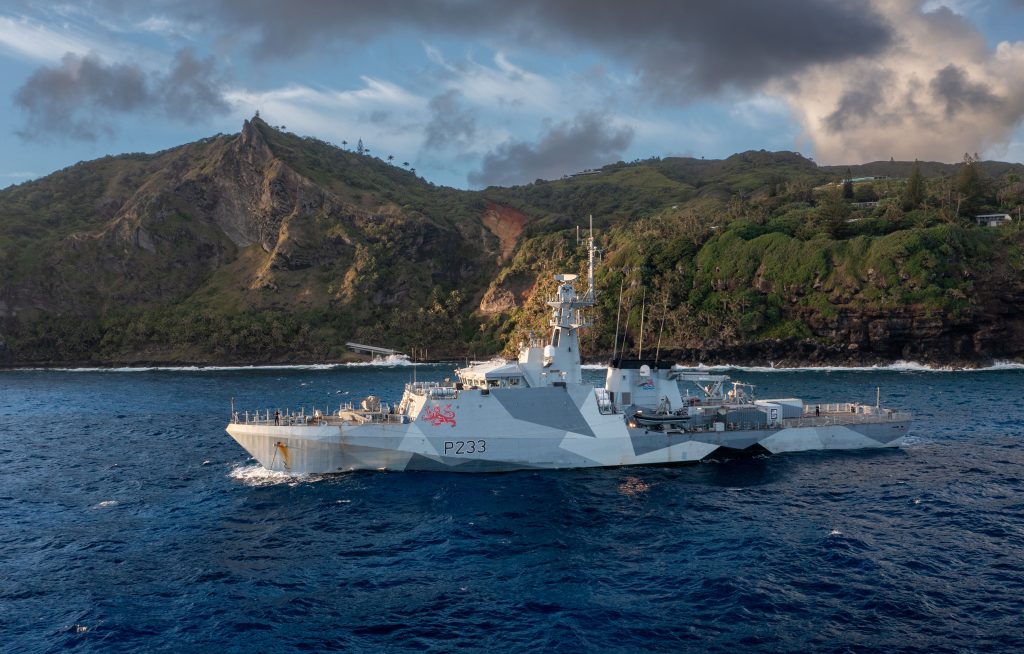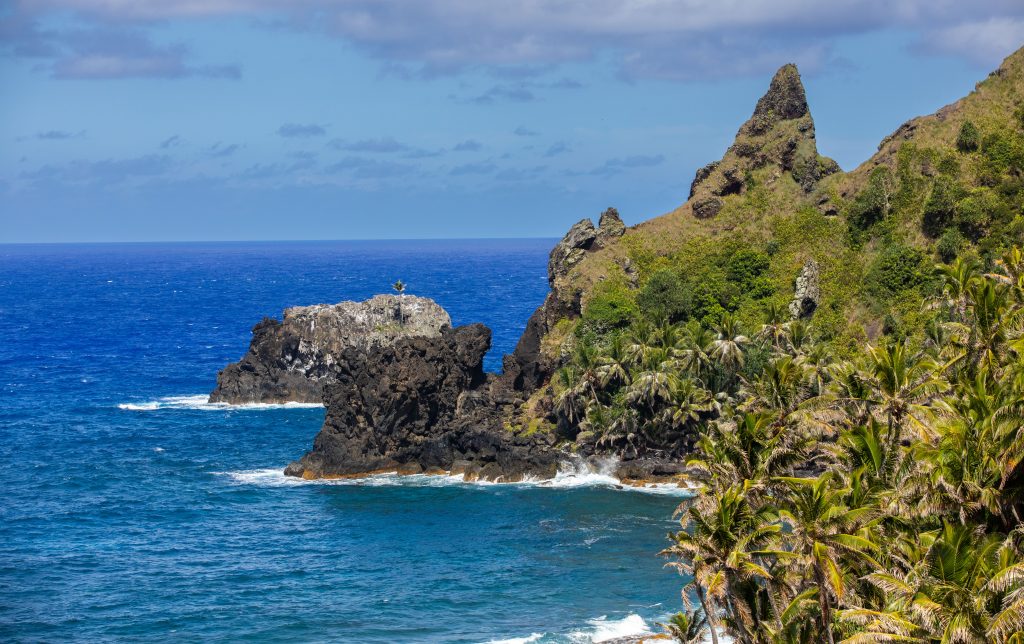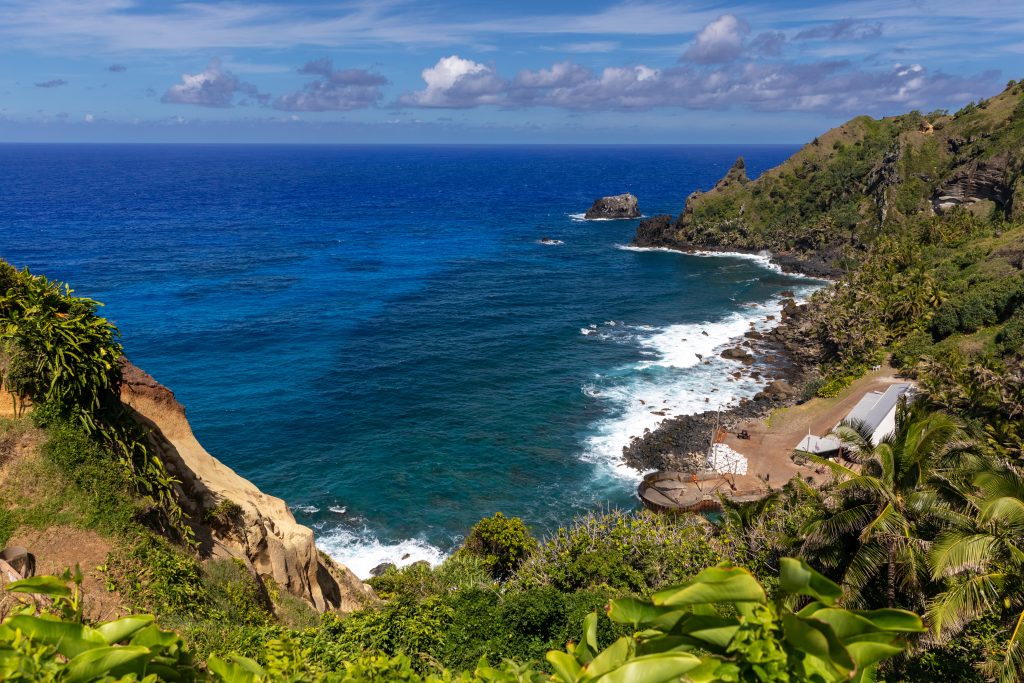Jim Gibson gave us a fascinating presentation (voiced with great humour by Martha Andrews) on the history of Pitcairn and life there in 2024. Jim, a professional photographer, served a tour of duty on Pitcairn on the HMS Tamar in January 2024, in his role as a Naval Reservist. We were given a unique opportunity to observe the terrain, flora and a glimpse of the way of life of the population living on this isolated volcanic island, of similar size to our Holy Island, 2,170 km south-east of Tahiti.


HMS Tamar a River class patrol vessel based in the Pacific Ocean sent members of the ships company to help with some communtity projects and to take in the culture of the island as well as a sports afternoon on the island.
The presence of prehistoric rock art and artefacts indicated that Pitcairn had been inhabited probably by Polynesians well before its discovery by Captain Philip Carteret of HMS Swallow in 1767. It is more famous for the Fletcher Christian mutiny on the HMS Bounty against Captain Bligh in 1789. Despite problems of illness and other catastrophes whilst at sea, 9 mutineers, 6 Polynesians and 12 women eventually landed on Pitcairn where they lived in obscurity fishing and farming until 1808 when a whaling ship discovered them. In the following years other ships called at the island bringing supplies and sometimes leaving sailors who had jumped ship!

Inevitably the population expanded and the demand on the local natural resources exceeded supply. Two attempts were made to resettle the islanders, one being to Norfolk Island off the eastern coast of Australia where there are still descendants of the mutineers. However, many chose to return to Pitcairn.
The biggest community on the island is Adamstown named after John Adams the last survivor of the original mutineers. Life was not always harmonious for the settlers. After successfully overcoming a massacre on the island in 1793 John Adams turned to religion and became a well respected leader and invaluable member of the community.
Today there is a population of about 50 on Pitcairn, including descendants of the original Mutineers and Polynesians. Occasionally, outsiders have sought to settle on the island some to fulfil certain roles e.g. the Padre of the 7th Day Adventist church which is now the religion.
Pitcairn, with three smaller, uninhabited islands nearby, form the sole British Overseas Territory in the Pacific Ocean. It receives an annual subsidy of £4 million which has enabled the islanders to have community amenities such as a school, church, even a Science Laboratory. In Pitcairn, as elsewhere, there are longstanding family feuds and the problems endemic in any society and there is a Legal System in place.

An ageing population means the future of a thriving community in Pitcairn is uncertain. We were lucky to have this piece of history brought to life by Jim’s personal experience and beautiful photography.
SYG 13.6.24
